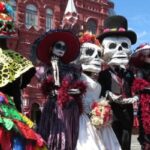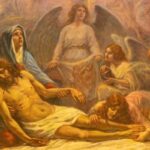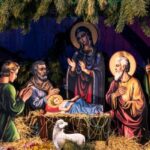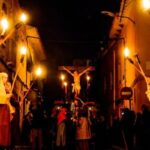We explain what Halloween is, its origin and how it became popular. Also, what are the symbols that represent it and its traditions.

What is Halloween?
Halloween or Hallowe'en is the English name for a popular holiday also known as the Night of the Dead, All Saints' Eve or Halloween. Normally, this celebration It involves sinister or horror costumes and decorations, linked to the world of the dead and witches, and is celebrated every year on the night of October 31.
The name of this celebration is the contraction of All Hallows' Eveningthat is, “All Hallows' Eve”, since it is celebrated on the night before All Saints' Day, according to the calendar of the Western Christian Church. It is a holiday typical of Anglo-Saxon nations, such as the United Kingdom, Ireland, Canada, the United States and, to a lesser extent, Australia and New Zealand. It has also become popular, due to cultural contagion, in Spain and in many Latin American nations.
The current variants of Halloween tend to respond to the more commercial and secular modes of celebration, especially in the United States, with costumes, parties and trick-or-treating (that is, “trick or treat”: asking the neighbors for some candy to eat under threat of causing mischief if they do not agree). However, in many countries traditional practices such as bringing candles to the graves of the deceased or abstaining from eating meat on that evening are still carried out.
See also: Day of the Dead
Halloween Origin
The exact origin of this celebration is uncertain, but everything indicates that It is an inheritance from the ancient Celtic cultures of Great Britain and Ireland, which celebrated Samhain on that date the end of summer and end of the year party, according to their calendar. On that date, the ancient Celts said goodbye to Lugh, the sun god, and believed that in his absence the dead could briefly set foot on Earth again. So, to scare them away, they lit large bonfires and wore masks and ritual costumes, so as not to be recognized by the evil spirits.
The Romanization of these European regions caused the Celtic tradition of Samhain to be mixed with many Latin rites such as the Feralia and the Pomona: the first in honor of the Manes, chthonic deities equivalent to the souls of the recently deceased; the second in honor of the goddess Pomona, who was asked for the abundance of crops.
The subsequent Christianization of the continent frowned upon this type of festival, and it is possible that they wanted to replace it with the celebration of All Saints' Day every November 1. But In the Middle Ages, pagan and monotheistic traditions intermingled regularly and the Protestant Reformation weakened papal authority in the northern European kingdoms, allowing Halloween to continue to be celebrated.
Halloween symbols
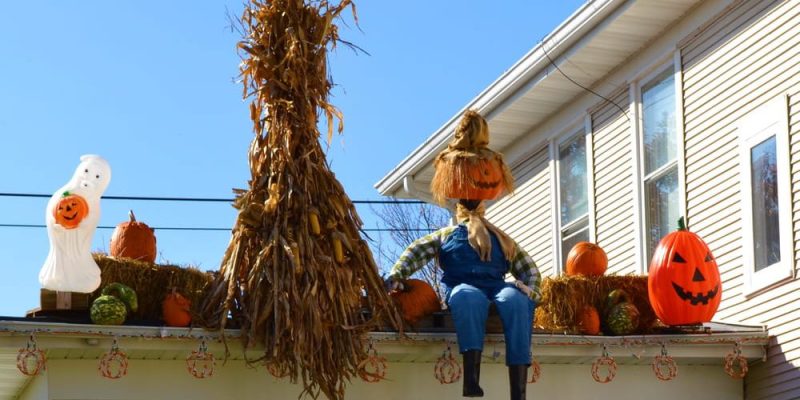
Currently, the Halloween party is associated with different symbols, many of which come from medieval tradition, while others have been incorporated in recent times. The main symbols of Halloween are:
- The pumpkins. These fruits are associated with Halloween due to the Anglo-Saxon custom of emptying them of their contents, sculpting a face on their surfaces and then placing a candle inside, to use them as a sinister decorative object. This symbol commemorates a character from Irish tradition known as Jack O'lantern either Jack-o'-lantern (“Lantern Jack”), who according to the story was a very cunning miser who managed to escape from the devil, keeping two embers of hell inside a vegetable, to use as a lantern.
- Bats, spiders and the web. Spider webs are part of the commercial decoration of Halloween, as a symbol of the aged and abandoned, since these animals usually make their nests in rarely frequented places, such as cemeteries and abandoned houses. The same happens with bats, animals that usually live in caves, buildings under construction and other desolate places.
- Witches and black cats. Halloween night is also known as Halloween, probably because since ancient times it was considered a favorable time for divination and futurology, given that it was the end of the year in the Celtic calendar. And witches, a contribution of medieval Christianity to the Halloween imagination, were precisely sinister women who made deals with demons and obtained from them the power for witchcraft and divination. Black cats were associated with witches, either because they could take their form or because they were their confidants in the dark arts.
- The scarecrows. Since Halloween was originally a celebration linked to the end of summer and harvest time, the scarecrow continues today to be one of its traditional icons, often combined with the pumpkin (especially if the scarecrow has it for a head). These figures, so common in agricultural fields, acquire a sinister connotation on the eve of All Souls' Day.
- Skulls and ghosts. As in other celebrations of the day of the deceased saints, on Halloween skulls, skeletons and ghosts are present in their most conventional representation, as emblems of the spirits that are loose throughout that night.
Halloween traditions
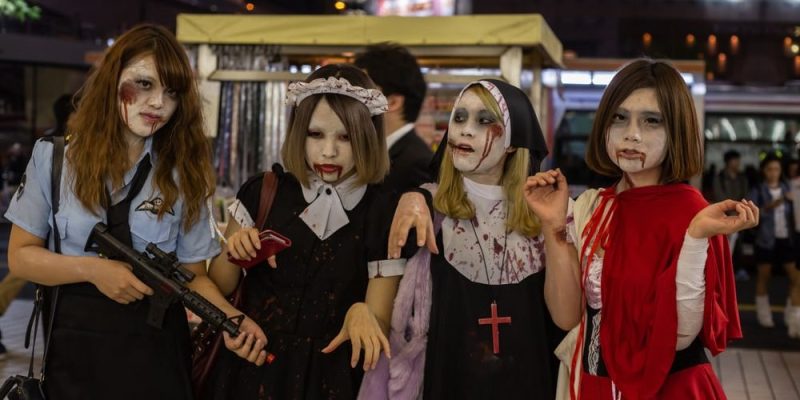
Halloween traditions can vary from place to place, especially as the tradition is reinvented in modern times, gaining and losing elements. However, some of its core traditions are:
- Halloween Gastronomy. Typical Halloween cuisine usually gives sweets a prominent role, through the preparation of sweet or caramel apples, and fruit cakes. Corn is also a common element, especially in the agricultural regions of the United States, as well as the ubiquitous pumpkin, although the latter is not necessarily part of the diet, but rather to make typical decorations.
- The use of costumes. The tradition of dressing up on Halloween has a long history, although in recent times it has become something that children do mostly, wearing costumes of their fashionable fictional characters, such as superheroes, movie characters or similar.
- “Treat or trick”trick-or-treating). It is common that, throughout Halloween night, children dressed in costume visit their nearby neighbors to ask for candy and candy, using the voice of “trick or treat!” (“trick or treat”). Children are supposed to embody mischievous spirits who, if they do not receive an offering, bewitch and harass the family.
- The decoration of the houses. It is common for houses to be decorated for the occasion on Halloween, using not only pumpkins, but also other implements that make them look like sinister or haunted places. It is not unusual for neighbors to also dress up and try to scare visiting children. Orange, purple and black colors abound in these decorations.
How did Halloween become popular?
The popularity of Halloween in the world is due to the influence and massification of American culture, especially through Hollywood and other international cultural industries. The presence of Halloween in American films and series is very common, to the point that there is a horror saga with the same name.
This has caused the festival to spread to countries outside of Anglo-Saxon culture, such as Ibero-American nations. For example:
- Halloween in Mexico. The celebration of Halloween in Mexico is quite limited, given that there is a strong traditional identity in this country around the Day of the Dead, celebrated every year on November 2. However, Halloween has become a popular holiday among younger generations, due to the proximity and influence of American culture. So in this culture a more commercial celebration (Halloween) and a more traditional one coexist, each in its own way.
- Halloween in Brazil. Halloween in Brazil has become a popular holiday among youth, but it does not have the same value as in the United States and other Anglo-Saxon nations. The decorations often imitate American fashion, with cobwebs, bats and skulls, but those celebrating this holiday are usually young adults who attend costume parties at nightclubs, rather than children searching for candy in their neighborhood.
Continue with: Christmas
References
- “Halloween” on Wikipedia.
- “What is the origin of Halloween?” in National Geographic.
- “What is the meaning of Halloween? This is the story you didn't know” in El Financiero.
- “Halloween” in The Encyclopaedia Britannica.

